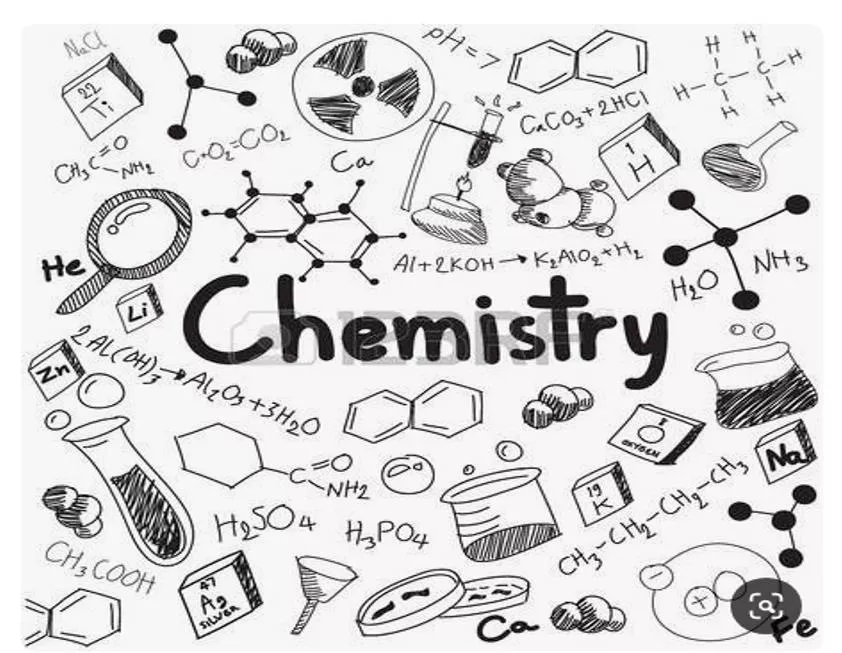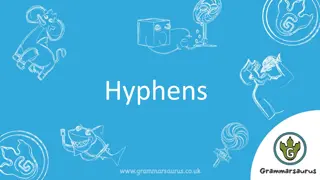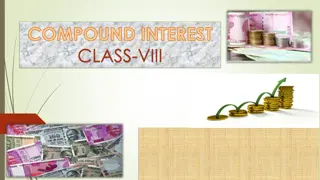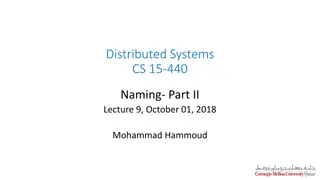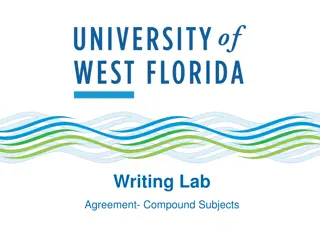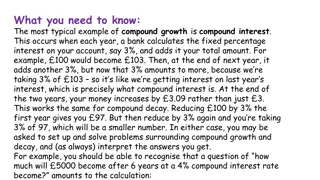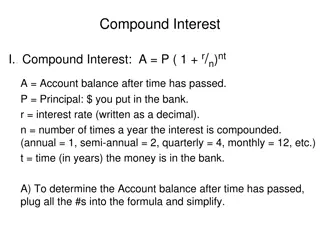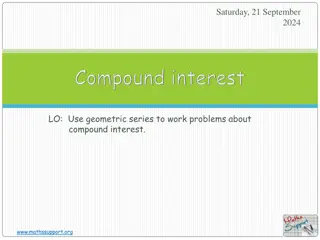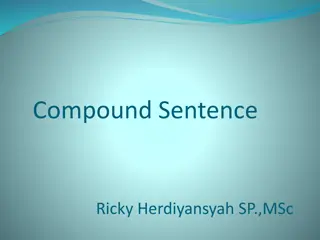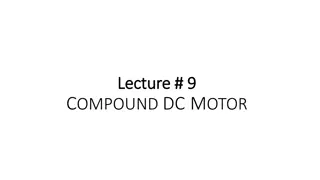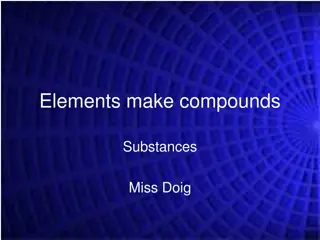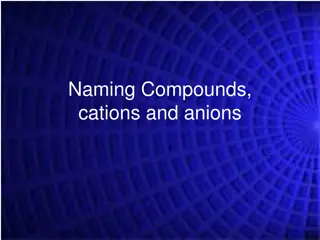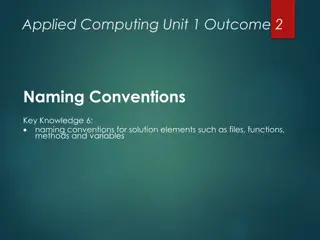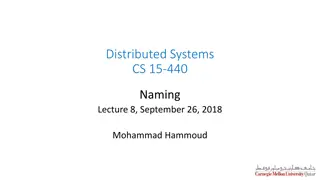Mastering Compound Naming for Chemistry Students
Develop your ability to name compounds and write their chemical formulas with ease by understanding the naming conventions for different compound types. Learn about compounds composed of metal and non-metal elements, compounds containing oxygen, and those made only of non-metals. Practice naming specific compounds to enhance your skills in chemical nomenclature.
Download Presentation

Please find below an Image/Link to download the presentation.
The content on the website is provided AS IS for your information and personal use only. It may not be sold, licensed, or shared on other websites without obtaining consent from the author. Download presentation by click this link. If you encounter any issues during the download, it is possible that the publisher has removed the file from their server.
E N D
Presentation Transcript
Lesson: (Naming compounds) Objectives: To be able to name compounds Write the chemical formula of different compounds.
Compounds A compound is a substance composed of two or more elements combined in a specific ratio and held together by chemical bonds. Familiar examples of compounds are water and salt (sodium chloride).
Naming Compounds (metal and non-metal) Remember that some compounds consist of two different elements. (metal and non-metal) 1) Name the first element that appears in the formula. 2) Name the second element that appears in the formula, changing its ending to ide. Examples: AlF3Aluminum fluoride Magnesium Chloride MgCl2
Naming Compounds Remember that some compounds consist of two different elements, one of them is oxygen. 1) Name the first element that appears in the formula. 2) Write oxygen, changing its ending to ide. Examples: Calcium oxide CaO Potassium oxide K2O
Naming Compounds Remember that some compounds consist of three different elements, one of them is oxygen: 1) Name the first element that appears in the formula. 2) Name the second element that appears in the formula. changing its ending to ate. Examples: NaNO3 Sodium nitrate K3PO4Potassium phosphate
Name the following compounds: KCl NaCl CaO MgBr2 CaF2 K2S LiBr Mg(NO3)2
Name the following compounds: KCl - potassium chloride NaCl - sodium chloride CaO - calcium oxide MgBr2 - Magnesium bromide CaF2 - calcium fluoride K2S - potassium sulfide LiBr - lithium bromide Mg(NO3)2 - magnesium nitrate
Compounds containing non-metals only Some compounds are made up of non-metals only. To name these compounds, you need to know the numbers of atoms of each element in a compound. Prefixes are used to show how many atoms are present in each molecule. Mono (or no prefix) 1 Di 2 Tri 3 Tetra 4 Do not use mono on the first element. CO2 carbon dioxide CO Carbon monoxide
Compounds containing non-metals only Do not use mono on the first element. Molecule of compound made up of Name of compound 1 atom of sulfur and 2 atoms of oxygen 1 atom of sulfur and 3 atoms of oxygen 1 atom of phosphorus and 3 atoms of chlorine 2 atoms of nitrogen and 4 atoms of oxygen
Compounds containing non-metals only Molecule of compound made up of Name of compound 1 atom of sulfur and 2 atoms of oxygen Sulfur dioxide 1 atom of sulfur and 3 atoms of oxygen Sulfur trioxide 1 atom of phosphorus and 3 atoms of chlorine Phosphorus trichloride 2 atoms of nitrogen and 4 atoms of oxygen Dinitrogen tetroxide
Name the following compounds SO2 SO3 CO CO2 NO NO2
Name the following compounds SO2 sulfur dioxide SO3 sulfur trioxide CO carbon monoxide CO2 carbon dioxide NO - nitrogen monoxide NO2 nitrogen dioxide
Name the following compounds N2H4 N2O3 PCl3 CS2 N2O
Name the following compounds N2H4 dinitrogen tetrahydride N2O3 dinitrogen trioxide PCl3 phosphorus trichloride CS2 carbon disulfide N2O dinitrogen monoxide





